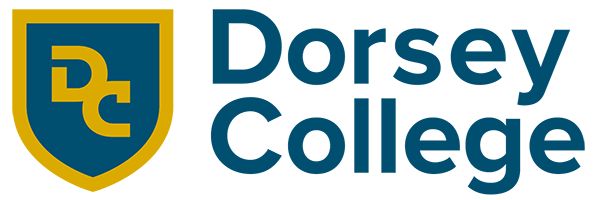If you have a caring heart, a desire to help people, and often find yourself pouring love into those in need, consider becoming an LPN! An LPN is a fully qualified entry-level nurse. LPNs often serve under the supervision of doctors and registered nurses. As integral members of healthcare teams, direct patient care is a top priority of a LPN. You may be asking yourself how do I become an LPN? If you wish to pursue this career path, one must follow steps to become a LPN. Continue exploring this quick pathway to the nursing field.
Learn more about our practical nurse program!
How to become an LPN
To become a LPN, typically, the steps required include:
● Finding a practical nursing program
● Successful completion of the suitable nursing program
● Receiving credentials and adequate training both clinically and through lecture courses
● Passing state licensure requirements and exam
● Pursuing employment once licensed
The following steps are necessary to enter the nursing field as a LPN and to fully understand the nursing theory, science, soft skills, and lab procedures associated with the role. These steps can prepare aspiring LPNs to be confident of what the job entails, what knowledge is needed, and an opportunity to develop the skills required to provide safe and effective care.
Receiving in-depth training and gaining experience in LPN job duties can help you build good rapport with other healthcare professionals. This networking can be beneficial when entering a healthcare setting. Let’s further analyze each step in detail to make the expectations a reality.
Step 1: Find a program and make sure you meet the requirements to enroll
You might be wondering, “how do I find the LPN program that is best for me?” Well, finding the right Practical Nurse program is vital. Students must find a program that not only fits their needs but also their schedule. You may even research online by searching for “LPN programs” in your particular area. This process requires time and it’s essential that the school of your choice is accredited and state approved. Once the school is selected you are ready to work your way up to receiving licensure after you have graduated and received your certificate/diploma.
You may also be wondering about requirements for LPN programs. Well, Practical Nurse programs usually have prerequisites prior to entering such as:
● High school diploma or GED equivalent
● Payment of school application fee
● Passing of placement testing
● Proof of citizenship
● Application interview
● And more!
You may also search online for “LPN schools near me” or “nursing schools near me” to research options close to your home. Once you narrow down the nursing schools you’re considering and apply, the school will let you know if you are accepted into the program once all prerequisites and requirements are met. Schools training practical nurses may also issue a school handbook and manual to students with instructions on school requirements, policies, and expectations.
Step 2: Successfully graduate from a program
To become an LPN, completing a Practical Nurse program is a must! Prospective LPN students will want to make sure they dedicate the necessary time and energy to complete their training. After all, nursing school is a lot of work! These programs usually take about a year to complete but may take longer, depending on the student’s schedule. After completing an accredited program, aspiring LPNs can gather information about state exams and the licensure process.
Classroom Training
Students may often wonder, what type of classroom training is covered in LPN programs? Practical Nursing training programs focus on field preparation. These programs are designed to ensure that students are provided with a lot of textbook knowledge and hands-on instruction. In addition, prospective students may wonder about the the LPN course curriculum and what their education may be like. Practical Nurse programs are designed to train future LPNs to promote, maintain and restore patient health through positive patient interactions. Practical Nursing students can learn the rules and guidelines on how to care for patients properly.
You may be wondering, “are certain classes required in an LPN program?” Well, general education and science courses may be required in a Practical Nurse program, and typically, classroom training involves mastery of the following concepts:
● Anatomy and Physiology
● Medical Terminology
● Practical Nursing Fundamentals
● Psychology: Mental Health Concepts
● Pharmacology and Medication Delivery
● And more!
These courses can provide aspiring LPNs with classroom training. They can also build a foundation on how to handle real-life situations, not to mention, adhering to state and law guidelines, and obtaining LPN knowledge. Students can apply textbook concepts to reality when ready to go to clinical training.
Another common question among students is, “who are the teachers in LPN programs?” Practical Nurse programs typically have expert professionals instructing the courses, so students can make the best of their education by gaining insight from medical experts and learning what it takes to become an LPN.
Clinical Training
One aspiring nursing student asked “what type of hands-on training can I expect from LPN programs?” In addition to classroom instruction, students will also take part in clinical training. At this time, an aspiring LPN must take the applied knowledge learned from classroom training and become hands-on with patient care. Some programs may have laboratories to help foster an environment like a medical facility. During clinical training, administrative tasks are also performed.
A sample of clinical tasks an LPN can learn while clinical training can be found below:
● Administering Injections and Medication
● Drawing Blood for Lab Analysis
● Assisting Patients with Personal Hygiene
● Taking and Recording Vital Signs
● Moving and Transporting Patients
● Performing CPR
● Practicing Proper Infection Control
● Filling Out Medical Reports
● Tracking Inventory and Supplies
● And more!
In becoming an LPN, clinical training is a much-needed step. Necessary equipment will be accessible in labs, such as stethoscopes or thermometers. Aspiring LPNs might also need to wear the required uniform during clinicals. Schools require clinical training and it is graded, so it must be taken seriously.
Step 3: Pass your state licensing exam
Once you’ve finished your training, you may be wondering “what happens after I finish an LPN program?” Well, the good news is, you’ve taken a big step forward in pursuing your career. That’s because a prospective LPN must complete a Practical Nurse program to be eligible for the NCLEX-PN exam ( The National Council Licensure Examination for Practical Nurses). The NCLEX-PN exam ensures that the LPN student has the basic knowledge and understanding of the nursing profession. The exam will cover the topics of social and psychological integrity along with healthcare safety.
Step 4: Pursue Employment
Once a training program is completed and an aspiring LPN receives a passing score of the NCLEX-PN (and have become licensed), seeking LPN jobs now becomes a reality! LPNs can work in hospitals, in patient homes (home health care), long-term care facilities, nursing homes, clinics, and more. The career path of an LPN can offer a variety of opportunities for advancement in the field. These may require additional training and/or education. No matter where you decide to go, patient care is needed , and patients need practical nurses in the nursing field who are well trained and compassionate towards their needs.
Is it hard to become an LPN?
The difficulty of becoming an LPN is up to the individual, however it is attainable, as long as you are dedicated to the practical nursing field and have good study habits and work ethic. All aspiring LPNs are given the tools and knowledge necessary to succeed. It’s up to the candidate to take the opportunity and prioritize the learning in course curriculum and clinical training.
Your career opportunities that await you after becoming an LPN
Once licensed, you can begin exploring career opportunities to land the right LPN job for you! LPNs can work in a variety of settings including nursing homes, hospitals, doctor offices and more.
Candidates can obtain typical LPN jobs mentioned above or they can choose to further their education once they start with an LPN career. Usually those who hold a LPN license and further their education will venture out to become an RN (registered nurse), but they may choose another path as well!
Take a step towards your future by enrolling in Dorsey College’s Practical Nurse Program
Now that you know what it takes to become an LPN the next step is to take them to become an LPN! Dorsey College’s Practical Nurse training program is designed to provide you with valuable knowledge and techniques that could help you provide effective patient care in a variety of healthcare settings. There is no better time than the present to explore LPN training schools in your area and begin training towards a rewarding career in the nursing field. We look forward to partnering with you on your journey into the nursing field! Contact Dorsey College today.
Dorsey College has determined that its Practical Nurse program curriculum is sufficient to fulfill educational requirements for licensure in the State of Michigan only. No educational determinations have been made for any other state, district, or US territory in regards to nursing licensure requirements.

